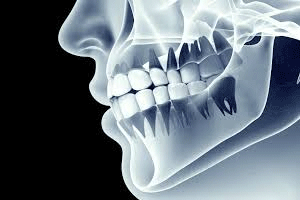
Gum disease and osteoporosis are two common conditions that affect a large portion of the adult population, and a growing body of research points to a significant connection between them.
Osteoporosis can affect all bones in the body, and that includes the jawbone. Gum disease, or periodontal disease, is an infection, typically chronic, that damages the soft tissue of the gums. Early-stage gum disease is called gingivitis and causes the gums to become red and swollen. If it’s not properly treated, gingivitis can progress to periodontitis, a serious condition that causes the gums to pull away from the teeth or recede, exposing more of the tooth’s surface. Pockets form trapping food and bacteria, which greatly increases the likelihood of infection. Gingivitis and periodontitis both cause bad breath and gums that bleed when you brush your teeth or floss.
How are they linked?
Gum disease and osteoporosis both involve bone loss, and having one condition increases the likelihood of experiencing complications from the other (1). When bone density decreases, including in the jawbone, the jaw becomes more vulnerable to the effects of gum disease, which can cause bone loss and potentially lead to tooth loss.
Both conditions are inflammatory. The chronic inflammation in the gums caused by periodontal disease can trigger or worsen systemic inflammation which affects bone health. Systemic inflammation driven by periodontal disease can potentially contribute to bone fragility.
Furthermore, osteoporosis can accelerate the progression of periodontitis, leading to faster bone loss and more serious oral health complications. This bidirectional relationship can create a vicious cycle where weakened bones contribute to tooth loss, which can further weaken the structure of the jawbone.
The association between periodontitis and increased fracture risk
As gum disease worsens, the risk of osteoporotic fracture increases. Advanced periodontal disease has been independently linked to a higher risk of fracture, particularly in the spine (2,3). Severe periodontitis is associated with greater osteoporosis severity, and individuals at higher risk of vertebral fractures tend to have more missing teeth than those at lower risk.
Be proactive about your oral health
- Practice good oral hygiene with regular brushing and flossing to prevent plaque buildup that causes gum disease.
- See your dentist regularly. This is especially vital for monitoring bone loss in the jaw and catching gum disease in its early stages, when it is highly treatable.
- Maintain a healthy diet to support overall bone health.
- Ensure adequate calcium and vitamin D levels.
- Make important lifestyle changes including quitting smoking and limiting alcohol consumption.
In summary
Many people are unaware of the important connection between osteoporosis and oral health. Existing evidence strongly suggests a relationship between periodontal gum disease and osteoporosis, which both share common inflammatory pathways. Maintaining good oral health as part of your overall bone health program is essential.
- Peng J, et al. Association Between Periodontitis and Osteoporosis in United States Adults from the National Health and Nutrition Examination Survey: A Cross-sectional Analysis. BMC Oral Health 2023; 23, 254.
- Park JH, et al. Better Oral Hygiene is Associated with a Reduced Risk of Osteoporotic Fracture: A Nationwide Cohort Study. Frontiers in Endocrinology (Lausanne) 2023 Sept; 14;14:1253903.
- Yoo JE, et al. Association Between Dental Diseases and Oral Hygiene Care and the Risk of Vertebral Fracture: A Nationwide Cohort Study. Osteoporosis International 2024; 35:635-644.

